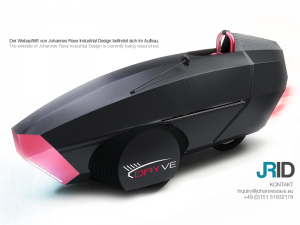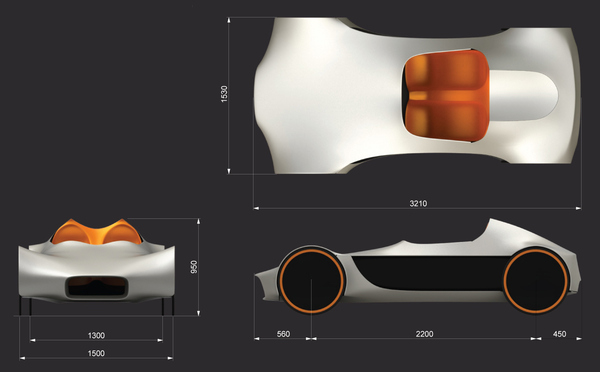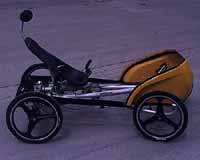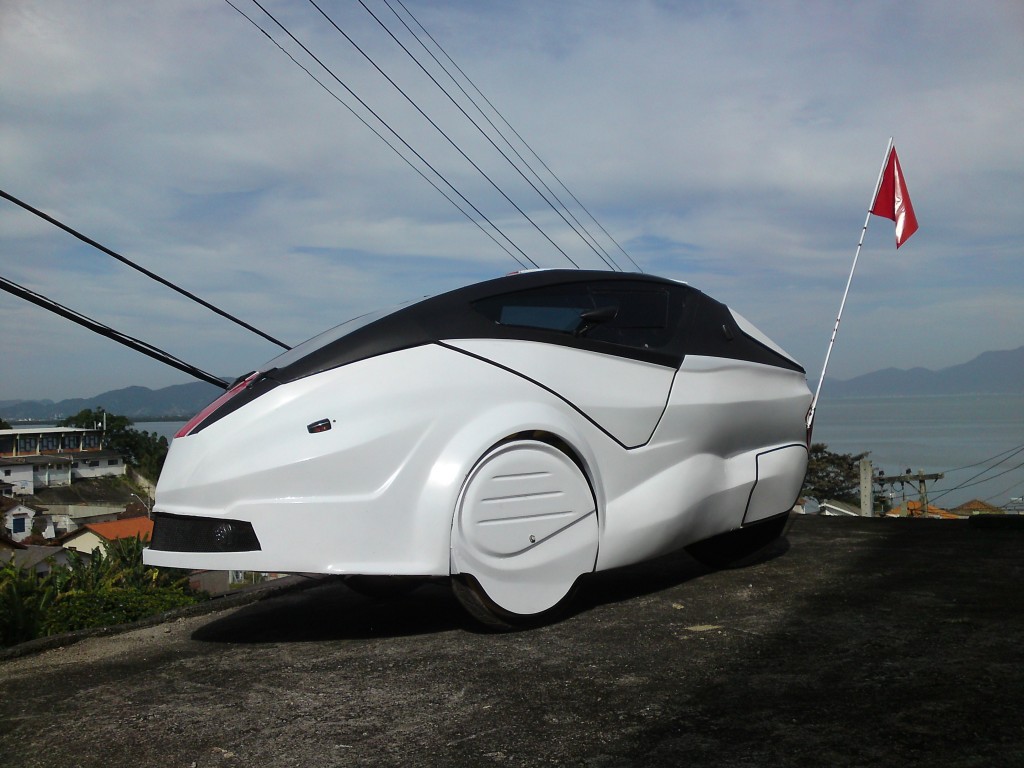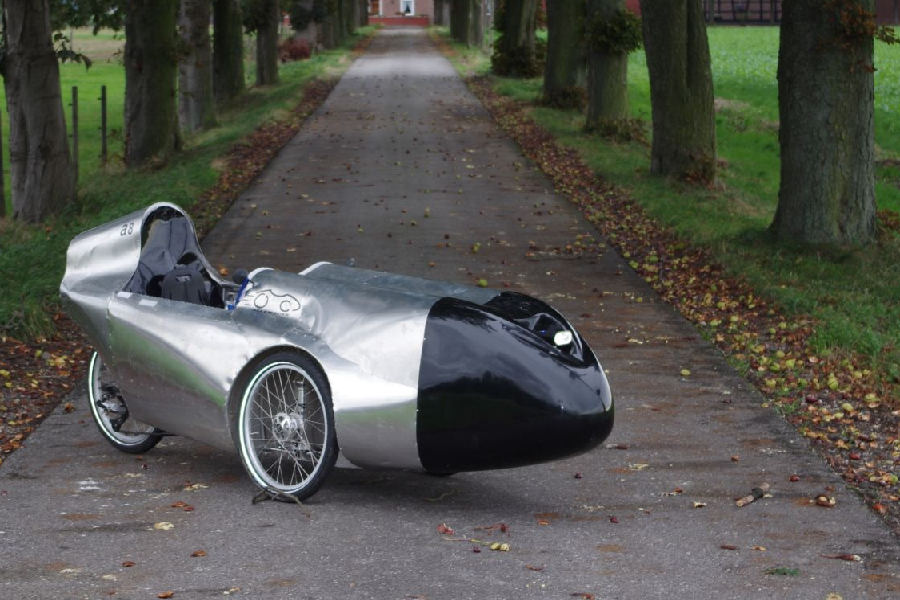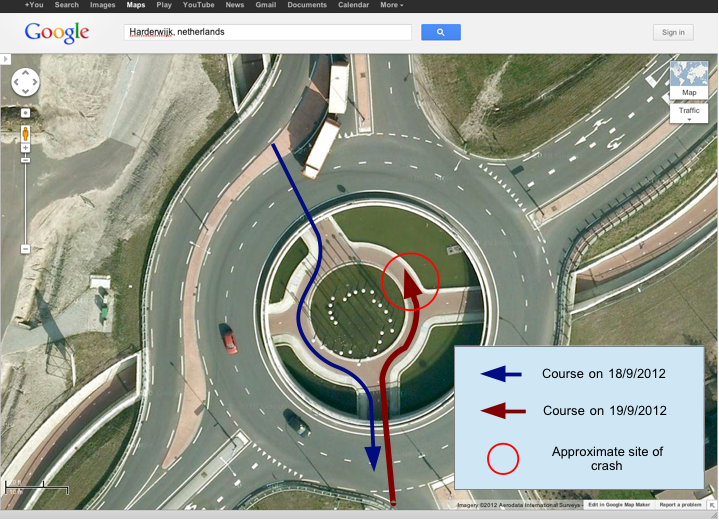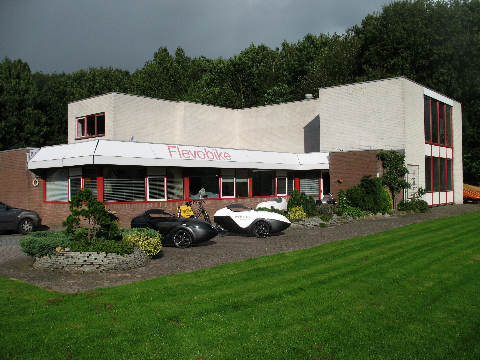Here at last is the promised report on this year’s Cycle Show.
2012 is the second year the show has been held at the NEC in Birmingham. It is also the second time I was able to attend, what aspires to be, the premier cycle trade event in the UK. However, with the current growth in cycling, the Cycle Show is beginning to face some competition from other new trade shows, that are developing in other parts of the country. The previous occasion I attended was in 2010, the last time the Cycle Show was held in London.
 The move to the NEC was intended to broaden the appeal and hopefully attract a greater number of attendees than the previous venue at Earl’s Court in London. The NEC venue, with it’s central location in the British Midlands and good road and rail transport links, is well placed to provide this, and I think the figures from this year’s show, prove the decision to move, was a good thing. For myself, a London based show was preferable, as it is always possible to stay with friends, and then use their home as a base from which to visit, without having to make a long commute. None-the-less I, and a little helper, were able to make a day trip to Birmingham via the train, but it was something of an epic journey.
The move to the NEC was intended to broaden the appeal and hopefully attract a greater number of attendees than the previous venue at Earl’s Court in London. The NEC venue, with it’s central location in the British Midlands and good road and rail transport links, is well placed to provide this, and I think the figures from this year’s show, prove the decision to move, was a good thing. For myself, a London based show was preferable, as it is always possible to stay with friends, and then use their home as a base from which to visit, without having to make a long commute. None-the-less I, and a little helper, were able to make a day trip to Birmingham via the train, but it was something of an epic journey.
This being my first ever visit to the NEC, I was impressed by the shear volume of exhibition space. With it’s twenty-something halls, which can be opened up to create a multi-hall venue, the location is well able to accommodate future growth. The Cycle Show occupied three of these halls (9, 10 and 11), and according to Cycle Show figures had an 11% increase in trade stand space over 2010. While attendance in 2011 was down it was up by 30% this year and surpassed the 2010 figures.
As one would expect the show is dominated with sports cycling particularly road racing and BMX, two sports that have been much in the spotlight since the Olympics earlier this year. However there was still plenty to see relating to more practical cycle use, and again one was impressed with a large area, in hall 11, given to electric bikes and systems. The evident increase in this sector since 2010, is a reflection of the massive growth being seen, as the technology has begun to mature and become a much more practical option. From a personal point of view, there did seem to be something lacking, and I am hard-pressed to put my finger on it. There were a number of exhibitors missing, which I had seen in London, but these should have been made up by others who were new to the show. Perhaps Earl’s Court had a slightly more intimate feel, but that was probably due to the cramped condition of a show, that had reached the venue’s capacity. Maybe the balance between sports and utility cycling was different, and not to my taste, I’m not sure. It is still early days for the new venue, so comparisons may not be altogether fair, however the prospects for the future look good. Hopefully this year’s figures will encourage the absent to make the effort to attend next year.
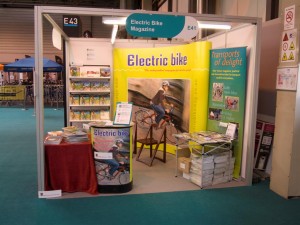 The main entrance was through hall 11 and it was in this hall where the first item of velomobile interest could be found. Here Peter Eland was manning the Velovision/Electric Bike stand, the link with Electric Bike magazine and the surrounding exhibitors was obvious. After chatting with Peter, he directed us to the Ocean Cycle stand, which had been moved from hall 10 to the other side of the electric bike area in 11.
The main entrance was through hall 11 and it was in this hall where the first item of velomobile interest could be found. Here Peter Eland was manning the Velovision/Electric Bike stand, the link with Electric Bike magazine and the surrounding exhibitors was obvious. After chatting with Peter, he directed us to the Ocean Cycle stand, which had been moved from hall 10 to the other side of the electric bike area in 11.
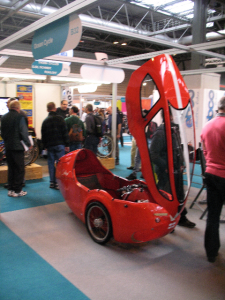 Ocean Cycle were exhibiting two Challenger velomobiles one of which was equipped with a Sunstar electric assist system. The two models also illustrated different hood mounting options. One designed to open sideways in the style of the Cab-Bike and the other tilting forwards in the style of the Leitra.
Ocean Cycle were exhibiting two Challenger velomobiles one of which was equipped with a Sunstar electric assist system. The two models also illustrated different hood mounting options. One designed to open sideways in the style of the Cab-Bike and the other tilting forwards in the style of the Leitra.
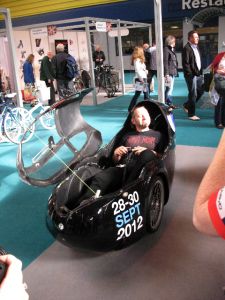 Ocean Cycle is the work of Marcin Szewczyk. He and a colleague Chris, were on the stand demonstrating the machines and answering questions, and while I was there, they seemed to be getting plenty of attention. Marcin can be seen, in the rather fuzzy photo, of the black Challenger. Ocean Cycle make some other recumbent specific products but the Challenger is very much their flagship.
Ocean Cycle is the work of Marcin Szewczyk. He and a colleague Chris, were on the stand demonstrating the machines and answering questions, and while I was there, they seemed to be getting plenty of attention. Marcin can be seen, in the rather fuzzy photo, of the black Challenger. Ocean Cycle make some other recumbent specific products but the Challenger is very much their flagship.
The Challenger itself is built on the ICE Sprint trike, also made in Cornwall. The velomobile is available, both as a kit to mount on a trike you already own, or as a complete ready-to-ride velomobile. The weight for the complete machine comes in at 32 kg, which is not bad, the body alone being 16 kg.
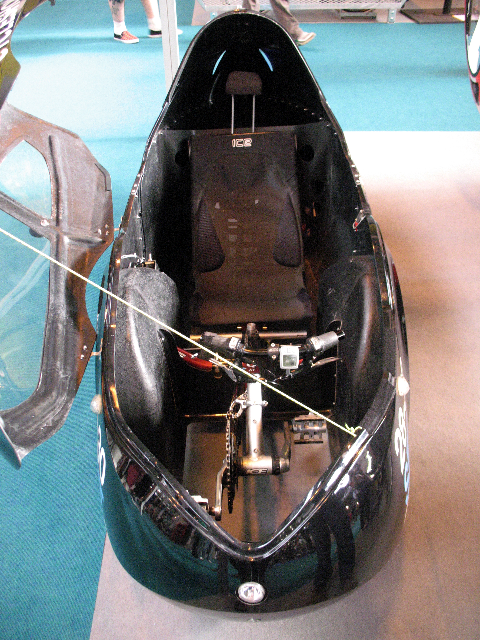 The fairing is made from glass fibre, with a number of small detail areas reinforced with carbon fibre. Being a fairing-on-frame type, the body is quite light-weight, and might feel a little flimsy, to those used to monocoque or self supporting velomobiles, but it is capable of supporting your own weight as you get in and out.
The fairing is made from glass fibre, with a number of small detail areas reinforced with carbon fibre. Being a fairing-on-frame type, the body is quite light-weight, and might feel a little flimsy, to those used to monocoque or self supporting velomobiles, but it is capable of supporting your own weight as you get in and out.
The Sprint is ICE’s “in-between” model not as low, and therefore fast, as the Vortex, but lower than the “go far” Adventure. As such the seat in the Challenger is quite low. However any disadvantage this might pose is offset, by both the ease of entry, and the lower centre of gravity – a definite advantage for handling at speed.
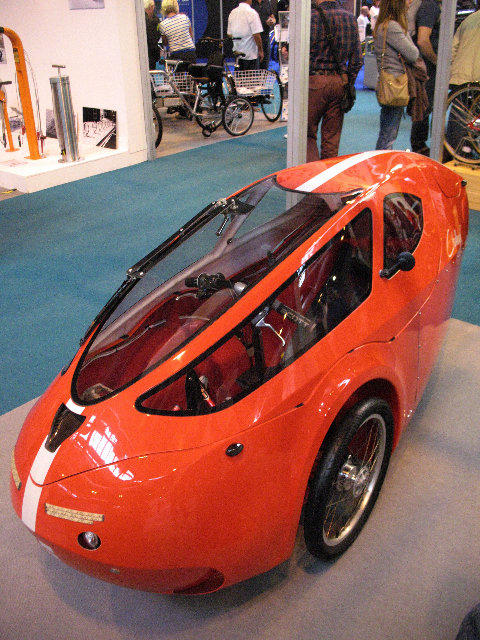 The Challenger’s external styling is certainly attractive, but such styling can sometimes result in some loss of function internally. Looking at the Challenger one is immediately concerned that the rider’s road view will be overly restricted. Sitting inside however, I found the view to be reasonable and the cabin had plenty of space, but, as with the machines I sampled at SPEZI, a static assessment is not enough, and a real world test ride is needed to make a final judgement.
The Challenger’s external styling is certainly attractive, but such styling can sometimes result in some loss of function internally. Looking at the Challenger one is immediately concerned that the rider’s road view will be overly restricted. Sitting inside however, I found the view to be reasonable and the cabin had plenty of space, but, as with the machines I sampled at SPEZI, a static assessment is not enough, and a real world test ride is needed to make a final judgement.
 I did attempt to take a panoramic shot of the view from inside but, not surprisingly at such close range, it was unsuccessful. One nice feature, which again needs real world assessment, is the windscreen wiper fitted to the hood. This is operated by a convenient handle from the inside, and should go a long way to solving the wet weather visibility problems experienced by most head-in velomobiles. A visit to Ocean Cycle, and a test ride, are things I plan to do in the coming months, time and finance permitting. Meanwhile if there are any readers with first hand experience of the Challenger in the “wild” then please add your comments below.
I did attempt to take a panoramic shot of the view from inside but, not surprisingly at such close range, it was unsuccessful. One nice feature, which again needs real world assessment, is the windscreen wiper fitted to the hood. This is operated by a convenient handle from the inside, and should go a long way to solving the wet weather visibility problems experienced by most head-in velomobiles. A visit to Ocean Cycle, and a test ride, are things I plan to do in the coming months, time and finance permitting. Meanwhile if there are any readers with first hand experience of the Challenger in the “wild” then please add your comments below.
Marcin and Chris have been very helpful, and naturally want to get the word out, contact details are on the Ocean Cycle website, and I do recommend taking the opportunity to visit and take a test ride, as I hope to shortly. It will be good to see more of these machines on the road soon.
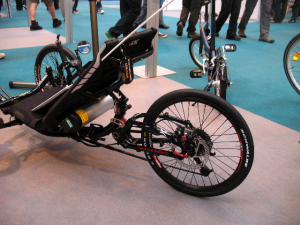 The next stand I visited was Sunstar. Sunstar is a multinational corporation with Japanese roots and quite a diverse range of interests, ranging from toiletries to motorcycle parts! Their eAssist system falls under their Environment & Amenity division.
The next stand I visited was Sunstar. Sunstar is a multinational corporation with Japanese roots and quite a diverse range of interests, ranging from toiletries to motorcycle parts! Their eAssist system falls under their Environment & Amenity division.
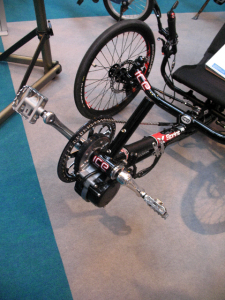 On their stand, they had a number of cycles fitted with examples their system. One of these was an ICE Sprint as used in the Challenger which gave a good opportunity to view the installation from all angles. The Sunstar system is designed to be fitted to most cycles as an after-market upgrade, and looked quite tidy and impressive, in a quiet sort of way. More information is available via their website.
On their stand, they had a number of cycles fitted with examples their system. One of these was an ICE Sprint as used in the Challenger which gave a good opportunity to view the installation from all angles. The Sunstar system is designed to be fitted to most cycles as an after-market upgrade, and looked quite tidy and impressive, in a quiet sort of way. More information is available via their website.
An after-show email from SparticleBikes, who seem to be representing the Sunstar system in the UK, highlighted the proven reliability of the system – Tried, tested and evolved for 10 years in Japan, and pointed to a demonstration video showing the ease of fitment. They also added the following photo of a recently retrofitted Challenger.
The other recumbents to be seen at the show, were designs tailored to special needs rider requirements, and while interesting in their own right, have little to offer the velomobile enthusiast that is not better catered for elsewhere.
The rest of the day was spent visiting other stands and going over the the mainstream cycle offerings. Perhaps the most interesting of these were the cycle tracking systems from Spybike and Eagle Hound, and the arm mounted signal indicator from Indic8or.
While theft of a velomobile is very rare, they naturally stand out and draw attention, not something a thief wants, it does occasionally occur. As velomobiles become more ubiquitous and socially accepted, their high value will make them more of a target of theft, and therefore a tracking system, which enables the safe recovery, and hopefully the capture and charging of the thief, will be a welcome option. Most trackers are designed to be hidden somewhere inside the tubular frames of regular bikes, which restricts their application for both recumbents and velomobiles. Though I’m sure someone could devise a creative way to embed these somewhere in a velomobile.
The system from Spybike was particularly interesting, as they also offer a none-tubular variant, designed to be mounted on a motorcycle. The only catch being that it presently depends on a 12 volt supply, as normally provided by a motor vehicle battery.
All-in-all it was an interesting show and I believe there is reason to look forward to next year.




